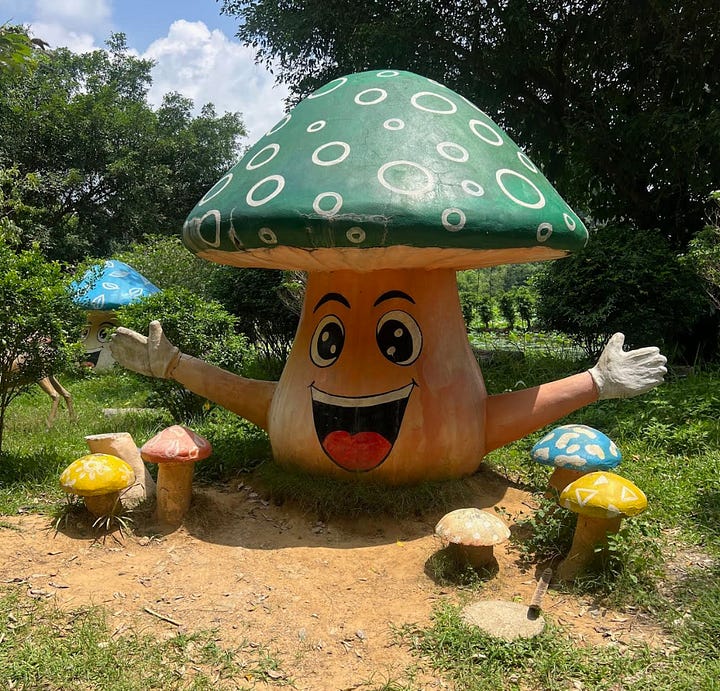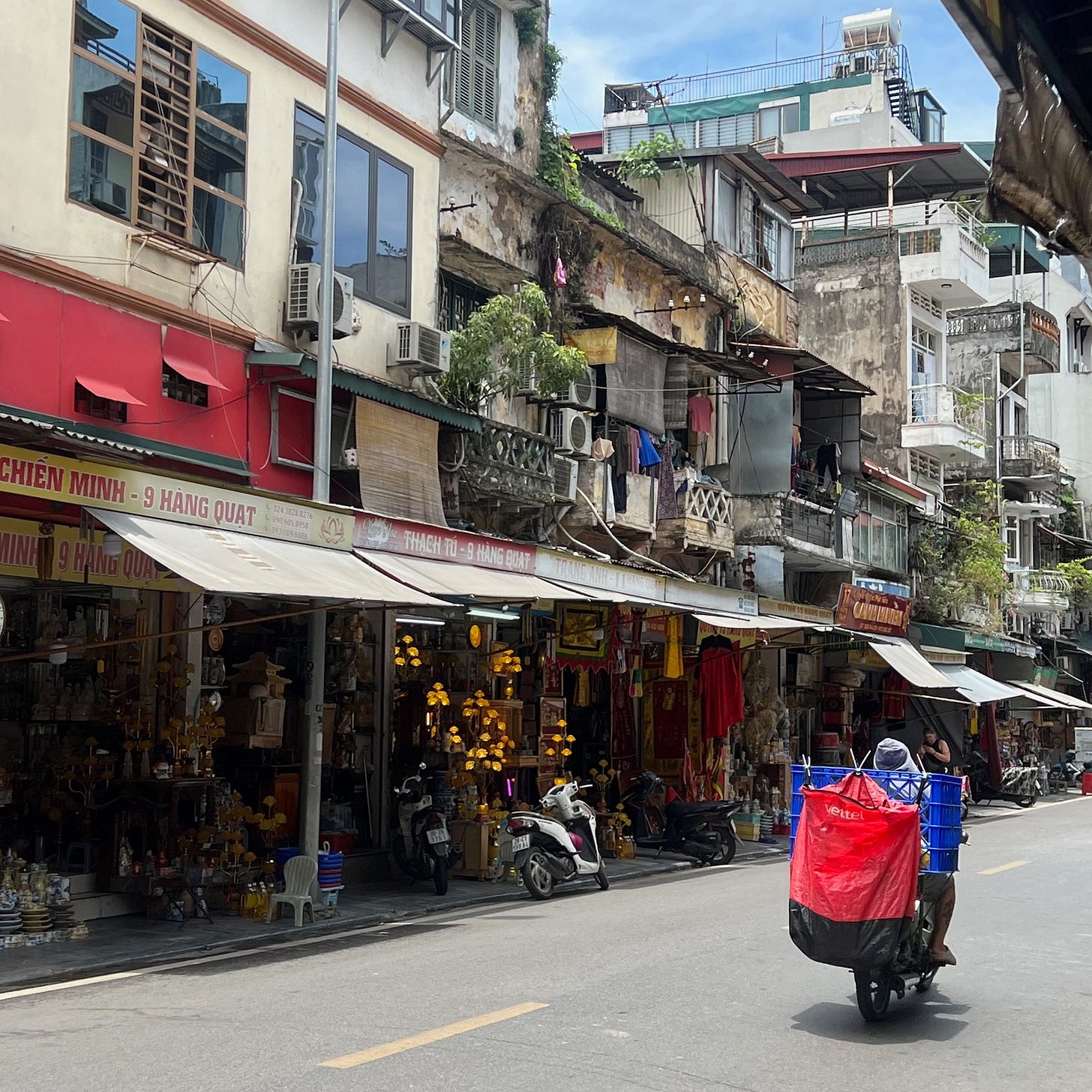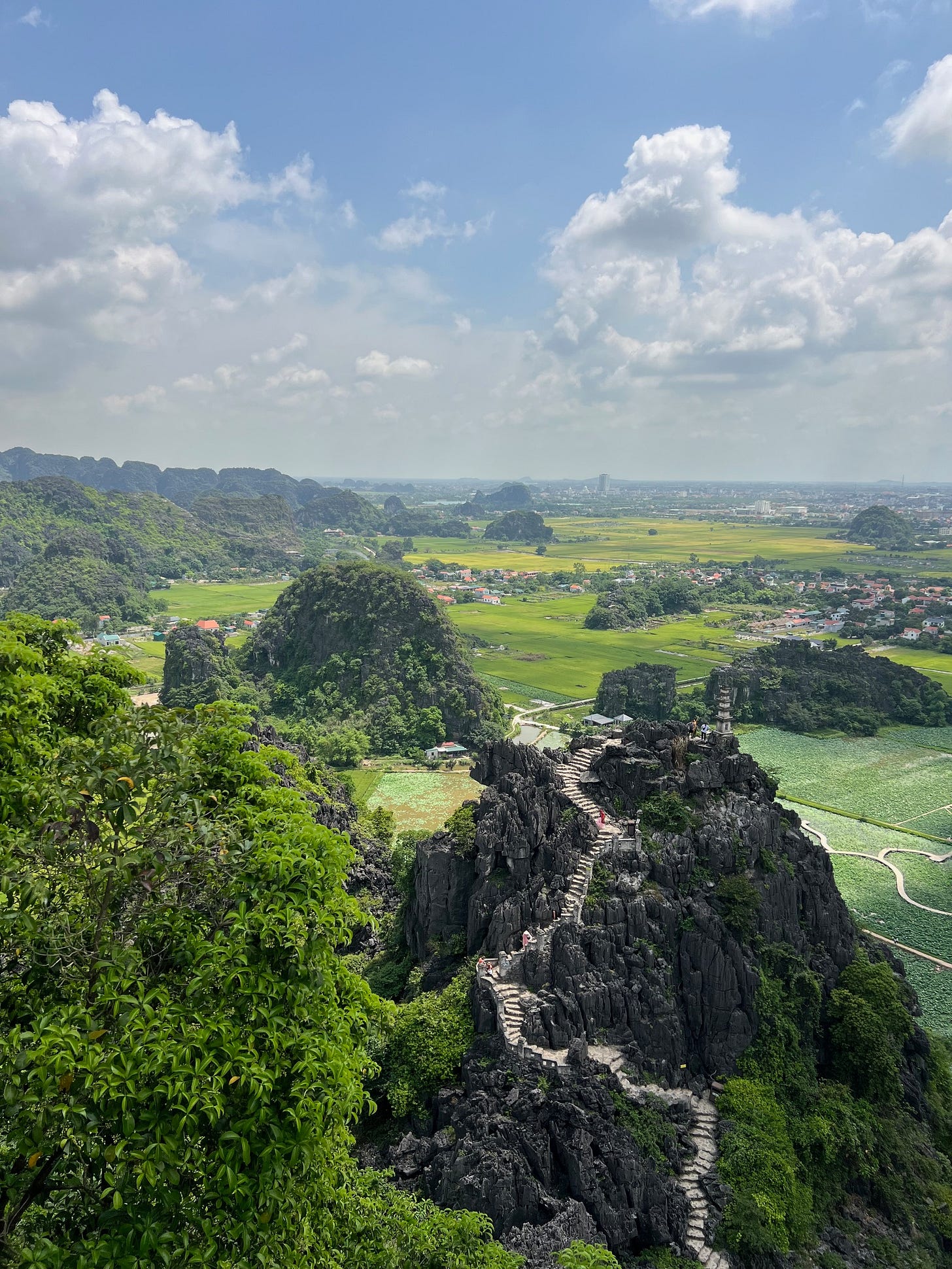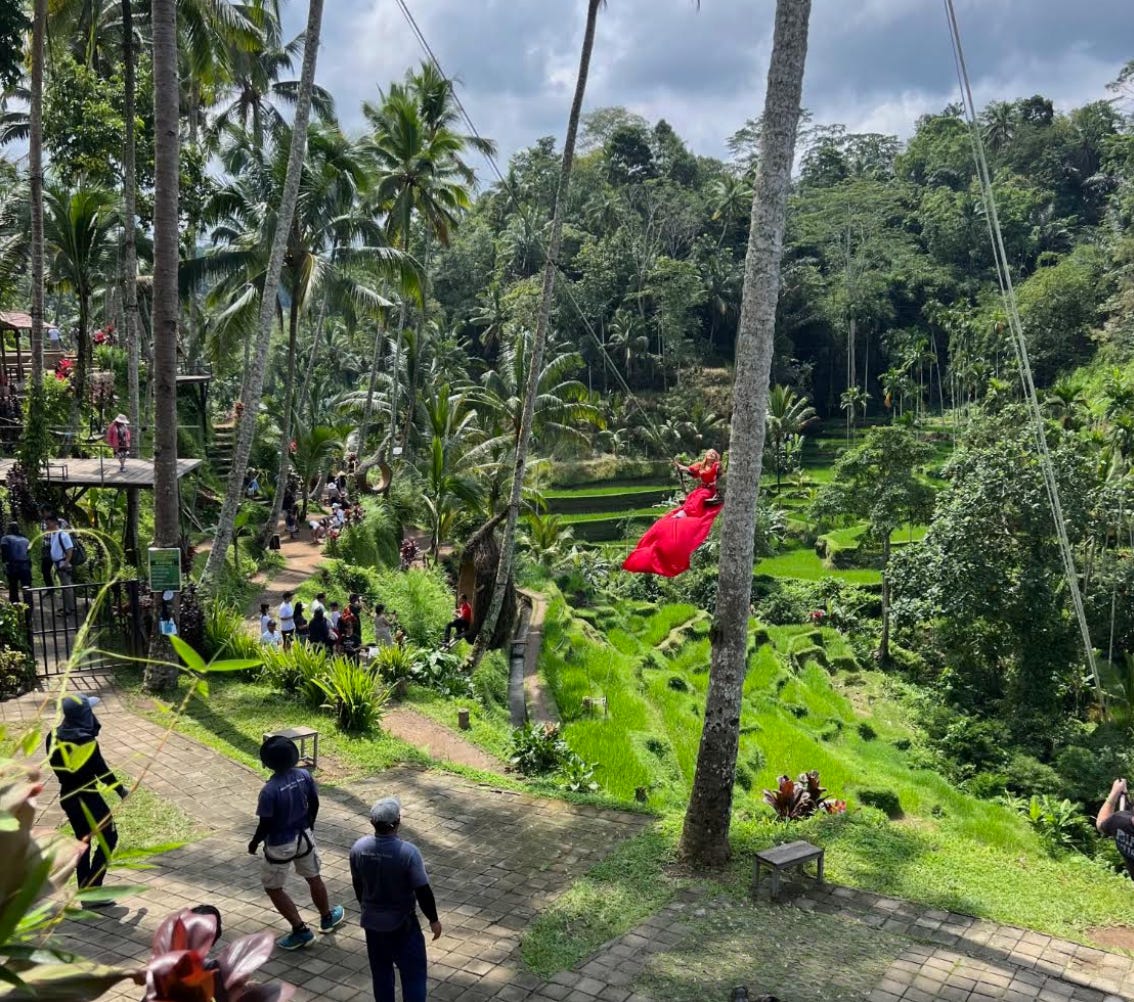Why Instagram is screwing up your holiday
And also probably the world
Over a coffee in Hanoi’s Old Quarter, An tells me a story. We’re both squatting on wooden chairs that don’t reach my knee, on the second floor of a rundown cafe. It’s startlingly hot. An oscillating fan in the corner of the room gives us both intermittent relief.
An tells me she didn’t grow up wealthy. Both her parents worked hard as farmers in rural Vietnam, where the summers were so hot that sometimes she’d sleep under the bed. But while things were tight growing up, An’s mother and father both did what they could to support her education.
An got into university, and while she was studying there, she decided to take an extra English course outside of her degree. While An had learnt some English in school, they had mostly focused on grammar — she wanted to get better at speaking. Her parents saw the value in that plan, and agreed to pay for the course.
Cash is still king in Vietnam. An said that when she went to hand over the money for the course — which cost a staggering 5 million VND — she felt her heart break.
“I had a big pile of money. I watched them count the notes, knowing that my mother will sometimes only make only 100,000 working a whole day. It was so much money for them. The feeling was — wow. So bad.”
But An’s a good student. She finished the course, finished her degree, and eventually decided that she would like to be a tour guide. It’s a competitive industry.
To do things legally, you need a license. But to get that license you need training, and then experience. And to get that training and then experience, you’ll probably have to work without pay. Which is how you might end up at one of the free walking tours that operate in the main cities.
If you were a touri st, you’d think they’re an ethical choice. The walking tour company markets themselves as a volunteer organisation matching English-learning students with English-speaking foreigners. You can tip your guide, sure, but they make it clear that you’re under no obligation to. This is a cultural exchange, they assure customers. Nothing more, nothing less.
But when I messaged the group at around 6pm on a Tuesday, hoping to book a tour the next morning, I got the suspicion that things weren’t exactly as they’d made it seem.
It took less than 10 minutes to get a professional-sounding reply. They told me I would be matched with someone who would be in touch via WhatsApp. Sure enough, I soon got a message from An .
I couldn’t help but think that for a volunteer organisation, this seemed to be a very well-oiled operation.
An met me at my hotel, and we spent a couple of hours ambling around the city. We went to a museum and a local market. She told me about Vietnam’s culture and her life. As the day progressed, I asked her how the local walking tours were actually making money. She gave me the story.
The tourists, it turns out, weren’t the customer — they were the product. It’s the guides who pay. For the honour of taking people around Hanoi for free, they must first take expensive courses and get accreditation. In exchange, they receive experience which might lead to paid employment with a different company down the line.
Hopefully they’ll also get thrown a tip or two, as well. But that isn’t always the case. An says that a group from a rich Middle Eastern country booked her for a full eight hours. In exchange, they gave her 50,000 VND — about three Australian dollars.
“I had to use my own money that day, too” she tells me.
An — and her family — have worked hard and sacrificed a lot for her to be a tour guide. This is her dream job and, frankly, she’s exemplary at it.
An’s taken classes on Vietnam’s history and culture. She can navigate the museums, and talk with authority about their exhibits. She’s funny, smart, informed, warm — the kind of person who could be on TV. This isn’t just a job for her, it’s a career. Perhaps even a calling. An tells me that she loves sharing Vietnam’s culture with foreigners, and while she hasn’t been overseas before, she feels like she’s seen the world through the stories of her customers.
But the nature of An’s work is changing, and not for the better.
Customer expectations are different than they used to be. An says it’s becoming less of teaching people about Vietnam, more about being a photographer.
Her days now involve taking people to a scenic location, snapping a few photos, and then moving to the next spot to do the same thing. There’s no curiosity, no interest in the people. They don’t see Vietnam as a country, it’s a backlot. An elaborate diorama for the social media posts.
The more visitors expect perfect photos, the more a place changes to accommodate them. Eventually it becomes a taxidermied version of itself – forever on display but without a soul.
Surely Bali is the zenith of this phenomenon. I travelled there in 2023, first to Canggu, then Ubud. On my first day, I sipped at an iced coffee curiously watching a large team of people (wardrobe, lighting, camera, makeup) conducting a photoshoot in the cafe. The model held a fancy drink she never sipped, stood on the edge of the pool she didn’t swim in, and lounged in a deck chair, but never relaxed.
I thought this was a fashion shoot, perhaps. That everyone was working. But when I returned the next day, it was the same people, the same poses, but a different ‘model’.
Then in Ubud I discovered large swathes of the countryside have been turned into bleak Instagram farms. I was taken to one of these places by a well-meaning driver early in my trip. A few acres of rice patties had been transformed from functioning farm land — once beautiful in its own right — into dozens of photographic tableaus.
Tourists paid a fee to enter, and would then line up to briefly pose on benches that overlooked the green fields. They would sit for a moment, as though soaking up the scenery, while a friend or family member fired off a few photos. They would then look over the pictures, reshoot if needed, swap places, and move to the next spot.
The main attraction, though, was an area at the top of a hill, which had several enormous swings, sitting above a precipitous drop. Tourists paid an extra fee to put on a filthy synthetic red dress with an enormous train over the top of their clothes. They would swing back and forward a few times, melting in the direct sun, adding another layer of sweat to the dress, while bored-looking staff took dozens of photos and a few videos. The outfit was then peeled off, and handed to the next person in line.
Instagram and TikTok is rotten with people on Ubud swings. The same angles, the same dresses, the same pseudo-whimsical expressions.
Do these people go to nice restaurants and eat wax fruit, I wonder? Why bother travelling at all?
I would call this phenomenon a theme park, but that would be an unholy insult to theme parks — roller coasters and parades and junk food are at least fun. These places exist to give the perception of fun, without the unaesthetic imposition of it.
Vietnam isn’t nearly as bad, but you can see the virus is spreading. I saw at least one Instagram farm in Ninh Binh, it was included with the ticket price to a scenic walk I wanted to do. The photographic section included another swing (this one in the middle of a lake of lilies, far too hot to actually enjoy), plastic bridges adorned with colourful lanterns and a collection of genuinely bizarre fibreglass statues of horses, mushrooms and swans.


It was a depressing counterpoint to the genuinely stunning, and quite taxing, walk up Ngoa Long Mountain. As though the panoramic views across Vietnam’s countryside wouldn’t be worth the $12 entry.
An’s worried there’s going to be more of these vapid soul-sucking vortexes. That their bland aestheticism will compete with real Vietnam and then eventually muscle it out entirely. But what can An do? Part of her job is keeping customers happy, and this is the kind of stuff they’re looking for.
Which puts the onus where it should be – on the tourist.
Photography is a worthy artistic pursuit, and one that partners well with travel. There’s no shame in wanting to remember your trip. But as photojournalist Dorothea Lange said in 1938: “the camera is an instrument that teaches people how to see without a camera”.
It seems we’ve got things the wrong way around these days — that the camera is getting in the way of people seeing. If that’s you, there is a solution.
Put the fucking phone down.
Put it down. Look at the sunset. Talk to some new people.
If you can’t manage that, perhaps stay at home instead.
EDIT: If you want my tour guide’s details, send me a message and I’ll happily pass them on. An organises tours right across Vietnam.





Oof this hits hard. I went on a whale watching tour today in Kaikoura NZ and probably half the tourists were clearly just there for the photo ops. People aren’t even seeing what they’re seeing! It’s not clear what can be done about it but oof.
Unlike someone swinging for photographers while wearing a dirty dress, I authentically enjoyed this. Thanks also for doing the audio. I record audio for all my posts too, and appreciate when someone puts in the extra effort. It adds such personality to the whole thing, I think.